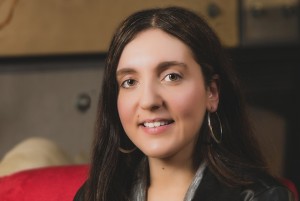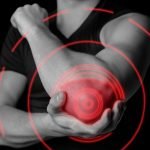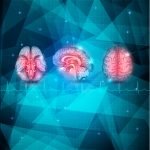Social Anxiety Disorder: A Case Study Assessing the Effect of Mindfulness & Acceptance-Based Therapy
Candice Esposito, ND
Social Anxiety Disorder (SAD) is estimated to be the most common anxiety disorder and the third most-common mental health disorder, only after alcohol abuse and depression.1 The Diagnostic and Statistical Manual of Mental Disorders (DSM-IV) defines SAD as a persistent and debilitating fear of embarrassment or humiliation in social situations. People with SAD often completely avoid these social situations or endure them with significant distress.2
Debilitating. Misdiagnosed. Under-recognized. Undertreated.
SAD can significantly impact a person’s quality of life. Social anxiety can interrupt education and job success, cause financial dependence, and impair relationships.3 Sufferers of social anxiety have more difficulty dating,4 are less-often married,5 record more sick days,6 experience reduced work productivity,7 and rely more on social assistance in comparison to those without the disorder.6 People with SAD are also more prone to depression and substance abuse.8
Sadly, misdiagnosis rates for SAD are estimated at 97.8%,9 meaning that only 2.2% of those who meet the criteria for SAD are correctly diagnosed by their primary care doctor. And not only is social anxiety disorder under-recognized, it is also undertreated. One study, examining the need for mental health services in a sample population, found that SAD sufferers comprised the portion whose treatment needs were most poorly met (only 7.9% received proper treatment).10
Fortunately, awareness of the disorder is growing and there is mounting evidence showing benefit from holistic approaches incorporating dietary and lifestyle changes, as well as mindfulness-based behavioral therapies. This is where naturopathic medicine and its practitioners have the potential to play a vital role in filling in this health care gap for sufferers of social anxiety.
Dietary Changes
Research examining diet has focused more on its effect on generalized anxiety than social anxiety specifically; however, there are potential lessons we can gleam from these studies.
Population-based studies have shown that individuals consuming a “traditional” diet consisting of vegetables, fruits, and lean, non-processed meats have a decreased likelihood of anxiety.11 Conversely, individuals consuming a “Western diet,” high in processed meats, pizza, chocolates, sweets, soft drinks, margarine, French fries, beer, coffee, cake and ice cream, have been shown to have a significantly increased likelihood of anxiety.12
The link between anxiety and the misuse of caffeine and alcohol is well established. Individuals with social anxiety are particularly vulnerable to the negative effects of caffeine,13 and long-term alcohol use can reduce levels of critical nutrients needed for brain function, such as B vitamins. Treatment of alcohol use in patients with SAD has been shown to reduce anxiety levels.14
There seems to be a higher prevalence of SAD in individuals who have celiac disease or a sensitivity to gluten.15 Greater rates of anxiety are also seen in people suffering from irritable bowel syndrome (IBS), a condition that has also been linked to food allergies/sensitivities.16 Therefore, ruling out the possibility of food allergies and intolerances is a reasonable step to take when investigating underlying causes of SAD.
Lifestyle Changes
Exercise has been shown to be a protective factor against all causes of disease,17 so it seems logical that physical activity would be beneficial for SAD as well. Surprisingly, there is little research to draw on from large-scale studies, even though an association between lack of physical activity and social phobia does exist.18
One smaller study showed beneficial effects of a home-based walking program,19 while another study showed benefits of exercise in combination with group cognitive behavioral therapy.20
Subjective insomnia has been associated with SAD severity,21 and poor sleep quality has been shown to diminish the effects of treatment for social anxiety disorder.22 Therefore, incorporating sleep hygiene recommendations in the treatment plan for social anxiety sufferers may be clinically indicated.
Mindfulness and Acceptance-Based Behavioral Therapies
The idea that distress is not inherent in an experience, but rather the result of our reaction to the experience, is at the core of mindfulness and acceptance-based therapies. The goal of such therapies is to gently shift our attention back to the present moment so that we may engage fully in life, with a non-judgemental curiosity and willingness to observe and experience whatever is happening. So rather than trying to suppress, analyze, or control our inner thoughts and feelings, the focus is awareness and acceptance of our inner experiences.23
Mindfulness techniques work to change the perception of a negative thought to viewing it as just that – a thought, words without value that come and go. This change in perception reduces the potential for triggering a reaction to the thought.
Acceptance and Commitment Therapy (ACT), a relatively recent off-shoot of cognitive behavior therapy (CBT), has shown particular promise in the treatment of SAD.24,25,26 The goal of ACT is to create a rich and meaningful life while accepting the pain that inevitably goes with it. So, unlike CBT, which teaches individuals to reduce or eliminate negative thoughts, ACT teaches individuals how to accept the negative thoughts.27
CBT theorizes that it’s the negative thoughts themselves that cause anxiety, whereas ACT suggests that it’s the struggle with the negative thoughts that causes anxiety.
Small-Group Case Study
The aim of this present study was to evaluate the initial effectiveness of combining Acceptance and Commitment Therapy with the basic tenets of naturopathic medicine, specifically addressing the first 2 steps as outlined in the Therapeutic Order: 1) establish the conditions for health, and 2) stimulate the healing power of nature.28
It was hypothesized that this program would result in decreased social anxiety, as well as increased mindfulness and acceptance.
Method
Participants
Participants included 5 individuals (3 women, 2 men) who had specifically sought out the therapist for the purpose of receiving therapy for social anxiety. All participants met DSM-IV criteria for social phobia (now listed as “social anxiety disorder” in DSM-5), as diagnosed by their primary care physician. The mean duration of SAD for the group was 24.6 years. An initial screening session was done prior to the start of the program, individually with all participants. Informed consent was provided by all participants during this session.
None of the participants reported a current or past history of substance abuse or dependence, psychotic symptoms, mania, obsessive-compulsive disorder, or suicide ideation. Three of the participants reported current depression. Two of the participants were taking psychotropic medications. The dosages were not adjusted during the study and all participants were asked to refrain from starting any new treatments while taking part in the program.
The mean age of participants was 36.8, and all participants were employed.
All participants completed the program and attended all group and individual sessions.
Measures
Three measures were used, which were administered pre-program, post-program, and at a 3-month follow-up session.
The Social Phobia Inventory (SPIN),29 a 17-item self-report, was used to measure fear and avoidance of social situations and physiological symptoms of social anxiety. The Mindful Attention and Awareness Scale (MAAS),30 a 15-item self-report, was used to assess mindfulness. And the Acceptance and Action Questionnaire (AAQ),31 a 16-item self-report, was used to assess acceptance (the “willingness to experience internal events”) and action (the “ability to take action, even in the face of unwanted internal events”).
Program Protocol
Twelve 2-hour online video conferencing group sessions took place, along with six 1-on-1 online video conferencing sessions, and 1 individual follow-up session that was 3 months post-program. The participants also had access to a self-directed, online component of the program, which included supplemental videos, audios, and written resources that followed the same sequence of lessons as the group sessions.
Content for the group sessions was adapted from the Mindfulness and Acceptance-Based Group Therapy for Social Anxiety Disorder treatment manual.32
Participants were encouraged to eat a whole foods-based diet consisting of vegetables, fruits, non-processed meats, fish, and oils such as extra-virgin olive oil and coconut oil, while limiting processed and fast foods, such as processed meats, candy, chocolates, soda, pizza, margarine, French fries, baking products, and ice cream. They were also strongly encouraged to avoid caffeine and alcohol during the 3-month program.
Participants were encouraged to participate in an outdoor physical activity of their choosing, for at least 30 minutes 3 times per week. They were educated about proper sleep hygiene habits and taught how to perform acupressure on Pericardium-6, Heart-7, and Kidney-1 points, which were recommended to be massaged each night before going to bed.
Each participant was asked to continue practicing the techniques and exercises learned in the program during the 3 months following completion of the program.
Data Analysis
Scores from the SPIN, MAAS and AAQ were submitted to repeated measure of analysis variance (ANOVA), and effect sizes were calculated using Cohen’s d statistic.
Results
There were significant reductions in social anxiety across time, from pre-program to the end of the program, with gains maintained until follow-up, as measured by the SPIN, F(2,14) = 85.95 (p<0.001).
There were significant increases in mindfulness over time, as assessed by the MAAS, F(2,14) = 24.39 (p<0.001). There was also a significant increase in acceptance, representing a decrease in experiential avoidance, as measured by the AAQ, F(2,14) = 48.75 (p<0.001). Gains in mindfulness and acceptance were maintained until follow-up.
Effect sizes were large for social anxiety, mindfulness, and acceptance.
Table 1. Means and Effect Size for all Measures (n=5)
| Measure | Pre-Program Mean | Post-Program Mean | Follow-up Mean | Effect Size |
| SPIN | 42.40 | 26.20 | 24.80 | 0.96 |
| MAAS | 3.38 | 3.90 | 4.09 | 1.00 |
| AAQ | 55.90 | 69.00 | 71.00 | 0.99 |
(SPIN = Social Phobia Inventory; MAAS = Mindful Attention Awareness Scale; AAQ = Acceptance and Action Questionnaire)
Discussion
The results of the program support the prediction that a combination of ACT and basic naturopathic treatment principles would significantly reduce social anxiety symptoms, as well as increase mindfulness and acceptance. The fact that all these gains were still experienced over the 3-month follow-up period suggests a strong possibility for changes to be maintained over the long term.
Limitations of the study include a very small sample size and the fact it was not a controlled trial. Larger studies, of course, would enhance the statistical power of the analyses, as well as decrease measurement variability. The program itself was highly intensive, involving weekly group coaching sessions and bi-weekly 1-on-1 sessions with participants. This may be difficult to replicate in a clinical setting.
Small group size lent itself to a very high compliance rate and high attendance rate from participants. Those levels of compliance and attendance may be difficult to replicate in larger groups. Additionally, some type of measure that does not rely solely on self-report would be beneficial to include in future analyses. The degree to which each participant actually followed through with the dietary and lifestyle changes was not assessed. Further assessment of this aspect of the study would be beneficial.
Although there is evidence supporting the use of mindfulness and acceptance-based therapies and dietary and lifestyle changes separately, there are no studies examining their combined use in the treatment of social anxiety. The results of this study suggest a holistic approach to this prevalent mental health illness may be beneficial, and further investigation seems warranted.
Candice Esposito, ND, is a graduate of the Canadian College of Naturopathic Medicine. Her own personal 20+ year struggle with social anxiety led her to create the Calm Living Blueprint (www.calmlivingblueprint.com), a mindfulness- and acceptance-based program which helps facilitate and empower other sufferers of social anxiety towards a life of calm, confidence and freedom. She is the host of the #1-rated social anxiety podcast, which reaches thousands of listeners around the globe each week.
References:
- Kessler RC, Berglund P, Demler O, et al. Lifetime prevalence and age-of-onset distributions of DSM-IV disorders in the National Comorbidity Survey Replication. Arch Gen Psychiatry. 2005;62(6):593-602.
- American Psychiatric Association. Diagnostic and Statistical Manual of Mental Disorders. 4th ed. Washington, DC: American Psychiatric Association; 1994.
- Valente S. Social phobia. J Am Psychiatric Nurses Assoc. 2002;8:67-75.
- Lader M. The clinical relevance of treating social phobia. J Affect Disord. 1998;50 Suppl 1:S29-S34.
- Lepine JP, Pelissolo A. Why take social anxiety disorder seriously? Depress Anxiety. 2000;11(3):87-92.
- Dupont RL, Rice DP, Miller LS, et al. Economic costs of anxiety disorders. Anxiety. 1996;2(4):167-172.
- Wittchen HU, Fuetsch M, Sonntag H, et al. Disability and quality of life in pure and comorbid social phobia: findings from a controlled study. Eur Psychiatry. 1999;14(3):118-131.
- Den Boer JA, Baldwin D, Bobes J, et al. Social anxiety disorder: Our current understanding. Intl J Psychiatry Clin Pract. 1999;3 Suppl 3:S3-S12.
- Vermani M, Marcus M, Katzman MA. Rates of detection of mood and anxiety disorders in primary care: a descriptive, cross-sectional study. Prim Care Companion CNS Disord. 2011;13(2).
- Messias E, Eaton W, Nestadt G, et al. Psychiatrists’ ascertained treatment needs for mental disorders in a population-based sample. Psychiatr Serv. 2007;58(3):373-377.
- Jacka FN, Pasco JA, Mykletun A, et al. Association of Western and traditional diets with depression and anxiety in women. Am J Psychiatry. 2010;167(3):305-311.
- Jacka FN, Mykletun A, Berk M, et al. The association between habitual diet quality and the common mental disorders in community-dwelling adults: the Hordaland Health study. Psychosom Med. 2011;73(6):483-490.
- Charney DS, Heninger GR, Jatlow PI. Increased anxiogenic effects of caffeine in panic disorders. Arch Gen Psychiatry. 1985;42(3):233-243.
- Hobbs JDJ, Kushner MG, Lee SS, et al. Meta-analysis of supplemental treatment for depressive and anxiety disorders in patients being treated for alcohol dependence. Am J Addict. 2011;20(4):319-329.
- Addolorato G, Mirijello A, D’Angelo C, et al. Social phobia in coeliac disease. Scand J Gastroenterol. 2008;43(4):410-415.
- Addolorato G, Marsigli L, Capristo E, et al. Anxiety and depression: a common feature of health care seeking patients with irritable bowel syndrome and food allergy. Hepatogastroenterology. 1998;45(23):1559-1564.
- Talbot LA, Morrell CH, Fleg JL, et al. Changes in leisure time physical activity and risk of all-cause mortality in men and women: the Baltimore longitudinal study of aging. Prev Med. 2007;45(2-3):169-176.
- Goodwin RD. Association between physical activity and mental disorders among adults in the United States. Prev Med. 2003;36(6):698-703.
- Merom D, Phongsavan P, Wagner R, et al. Promoting walking as an adjunct intervention to group cognitive behavioural therapy for anxiety disorders – a pilot group randomized trial. J Anxiety Disord. 2008;22(6):959-968.
- Jayakody K, Gunadasa S, Hosker C. Exercise for anxiety disorders: systematic review. Br J Sports Med. 2014;43(3):187-196.
- Kushnir J, Marom S, Mazar M, et al. The link between social anxiety disorder, treatment outcome, and sleep difficulties among patients receiving cognitive behavioural group therapy. Sleep Med. 2014;15(5):515-521.
- Zalta AK, Dowd S, Rosenfield D, et al. Sleep quality predicts treatment outcome in CBT for social anxiety disorder. Depress Anxiety. 2013;30(11):1114-1120.
- Abba N, Chadwick P, Stevenson C. Responding mindfully to distressing psychosis: a grounded theory analysis. Psychotherapy Research. 2008;18(1):77-87.
- Dalrymple KL, Herbert JD. Acceptance and commitment therapy for generalized social anxiety disorder: a pilot study. Behav Modif. 2007;31(5):543-568.
- Ossman WA, Wilson KG, Storaasli RD, McNeill JW. A preliminary investigation of the use of acceptance and commitment therapy in group treatment for social phobia. Rev Int Psicol Ter Psicol. 2006;6(3):397-416.
- Kocovski NL, Fleming JE, Hawley LL, et al. Mindfulness and acceptance-based group therapy versus traditional cognitive behavioral group therapy for social anxiety disorder: a randomized controlled trial. Behav Res Ther. 2013;51(12):889-898.
- Harris R. Embracing your demons: an overview of acceptance and commitment therapy. Psychotherapy in Australia. 2006;12(4):2-7.
- Zeff J, Snider P, Myers SP. A hierarchy of healing: the therapeutic order. In: Pizzorno J, Murray MT, eds. Textbook of Natural Medicine. 3rd ed. St Louis, MO: Churchill Livingstone Elsevier; 2006:27-39.
- Connor KM, Davidson JR, Churchill LE, et al. Psychometric properties of the Social Phobia Inventory (SPIN). New self-rating scale. Br J Psychiatry. 2000;176:379-386.
- Brown KW, Ryan RM. The benefits of being present: mindfulness and its role in psychological well-being. J Pers Soc Psychol. 2003;844):822-848.
- Hayes SC, Strosahl K, Wilson KG, et al. Measuring experiential avoidance: A preliminary test of a working model. The Psychological Record. 2004;54:553-578.
- Fleming JE, Kocovski NL. Mindfulness and Acceptance-Based Group Therapy for Social Anxiety Disorder: A Treatment Manual. 2nd ed. Oakland, CA: New Harbinger Publications; 2014. Available at: http://www.actonsocialanxiety.com/pdf/magt_for_SAD_2nd_ed.pdf. Accessed November 15, 2014.
http://rxbuywithoutprescriptiononline.com/plavix.html
http://yourcialisrx.com/cialis_soft_tabs.html
http://rxbuywithoutprescriptiononline.net/trazodone.html










